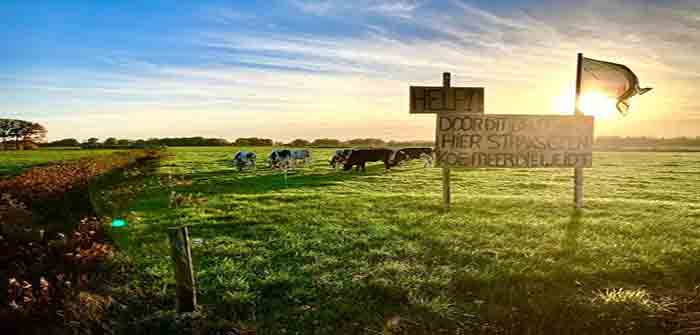
by Nash Landesman at The GrayZone
The Netherlands is a patchwork of quaint towns and cities interwoven with flat expanses of immaculately-kept green agricultural pasture. The road and rail infrastructure are near-flawless. You could search for weeks without finding a pothole. It is one of the most expensive countries in the world, and makes some of the best steak, cheese, yogurt and milk on the planet. The land is fertile, valuable, and strategically located with easy access to the north Atlantic coast. So, for these reasons and more, legions of committees composed of unelected, largely unknown figures serving on the boards of an interwoven network of even lesser known private and multilateral bodies, insists on seizing it all, on account of saving the planet from its deadliest enemy: man himself. Their target: the Dutch farmer. “They are slowly killing us with regulation,” one farmer told The Grayzone. It is death by a thousand paper-cuts, or The Art of War by the modern technocrat.
First, some background: Holland exports the most food on earth, behind only America, on a landmass roughly the size of Indiana. Farmers the world over come to study Dutch techniques. The country embraces what’s known as the Mansholt theory—a philosophy of ensuring food security and self-sufficiency that emerged from the second world war as a response to Nazi-imposed famine. To stave-off a similar tragedy, Dutch agriculture embraces the Haber-Bosch process, a method of infusing fertilizer with nitrogen to increase yield efficiency. Invented in the early 1900s by a pair of Nobel Prize-winning chemists, Haber-Bosch is responsible for the existence of half the world’s population today (and is known in Malthusian circles as “the detonator of the population explosion”), thanks to its ability to grow more food on less land.
But now global bodies like the World Bank’s “Climate Smart Agriculture” program,…
Continue Reading